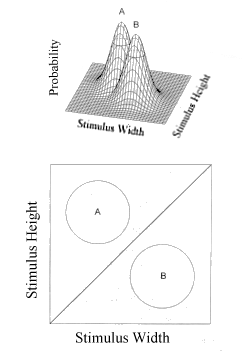![]()
|
Figure 4. Top panel: Bivariate normal
distributions represent the likelihoods that various rectangles
were presented as exemplars of fuzzy categories A or B. Each point
in the space over which the distributions are defined corresponds
to a possible rectangle displayed to a pigeon. Any rectangle could
be presented as an exemplar of either category, but most
rectangles were more likely to belong to one category than to the
other. |
